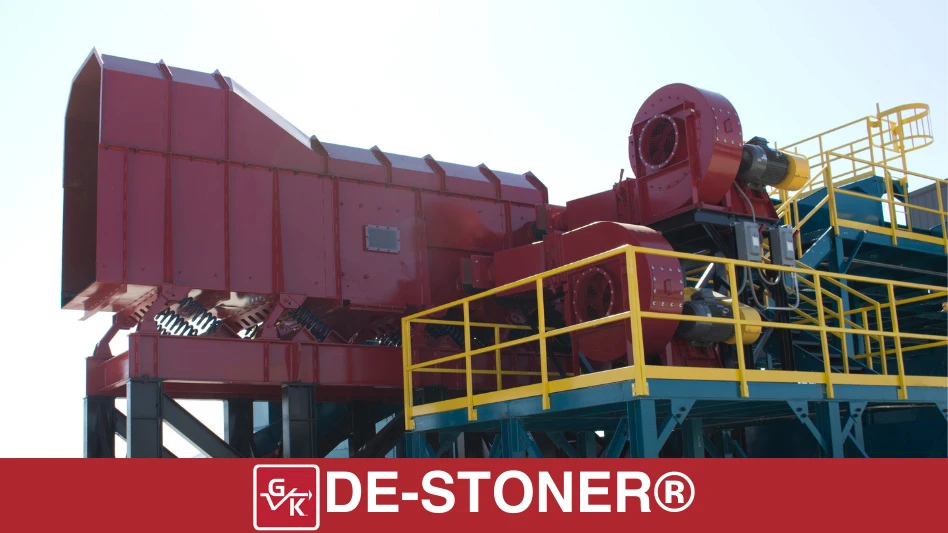Lockheed Martin opens bioenergy facility in New York

Lockheed Martin, Bethesda, Maryland, opened a new bioenergy facility in Owego, New York. The system, which is completing commissioning, uses Los Angeles-based Concord Blue’s technology to convert waste into clean, renewable energy.
Lockheed Martin hosted a successful demonstrated the end-to-end capability of the new system Sept. 20.
The demonstration validated the facility’s ability to convert waste material into energy for the company’s Owego operations, where it designs and builds space-flight hardware, military helicopters and fixed-wing aircraft.
This system transforms waste into electricity through a process known as advanced gasification.
Wood debris, municipal solid waste, industrial waste and other wastes can be collected and used as feedstock for the system. Metal, glass and other materials are removed, and the waste is dried to specification.
Proprietary heat carrier spheres are heated and mixed in with the organic waste. Once a certain temperature is reached, the solid waste turns into gas, which then travels to a reforming vessel where the gas is turned into synthesis gas or syngas.
The syngas is then used to fuel a combustion engine that produces electricity. Alternatively, the syngas can also be used to produce hydrogen and biofuels.
The Owego facility will initially use wood debris, with plans to transition to municipal, commercial or industrial waste to create its power in the future.
A video showing the process used at the Owego facility is available online at www.CDRecycler.com/video/lockheed-martin-concord-blue-bioenergy-facility-video.
California Biomass Energy Alliance supports new legislation
During its August 2016 legislative session, the California State Legislature passed measures that will require utilities to use biomass.
Six biomass plants have shut down in California in the last two years, which has left millions of dead trees from drought with no place to go but landfills.

Julee Malinowski-Ball, executive director of the California Biomass Energy Alliance (CBEA), calls the new legislation a “big win” for the biomass industry.
A few days before the end of the legislative session, language was put into California Senate Bill 859, which would require the state’s largest utilities, both public and private, to procure 125 megawatts of biomass power from mostly the forested zones deemed high hazard zones.
This is in addition to a 50-megawatt requirement the California Public Utilities Commission placed on the state’s three largest investor-owned utilities.
“The big deal in my mind is that the California state legislature acknowledged No. 1 that there is a problem out there with organics management—today it just happens to be in the forestry sector—and they acknowledged biomass infrastructure is part of the solution.”
She notes the legislation is more focused than initially the industry was hoping for, as it did not address agriculture waste and urban organic waste but says it is “an excellent start.”
“Though that facility mostly is taking forest material, there may be room for it to take other types of material, so that fact that a facility is open is really the first hurdle,” Malinowski-Ball says.
Gov. Edmund Brown signed the legislation in late September. Utilities have until Dec. 1 to meet the requirement.
Ineos Bio to sell Florida biofuels plant

Ineos Bio is selling its biofuel plant in Vero Beach, Florida. The Indian River BioEnergy Center, which opened in 2013, was a joint venture with New Planet Energy Florida.
The facility had been developing waste-to-ethanol technology.
Switzerland-based Ineos had reported it had successfully converted several types of waste into bioethanol, including vegetative and yard waste, citrus, oak, pine and pallet wood waste, but throughout its three-year history, had experienced a host of issues.
In a January 2014 article on www.REWmag.com, site director David King said, “Bringing the facility online and up to capacity has taken longer than planned due to several unexpected start-up issues at the center. These efforts have highlighted some needed modifications and upgrades.”
In September 2014, the company announced it had completed a major turn-around that included upgrades to the technology as well as completion of annual safety inspections. The company also was installing equipment to remove impurities from one of its process streams that it said had been negatively impacting operations.
Millions of dollars in state and federal grants went toward the construction of the $130 million plant as well as county grants and tax credits. The facility was expected to produce 8 million gallons of cellulosic ethanol and six megawatts of renewable power. It was permitted to use municipal solid waste in its production.
The Ineos Bio’s USA Research Center in Fayetteville, Arkansas, is also reportedly being sold.

Explore the November 2016 Issue
Check out more from this issue and find your next story to read.
Latest from Construction & Demolition Recycling
- C&D World session preview: Key strategies for effective fleet maintenance
- Rotochopper hosts equipment owners at annual training program
- EAF mill underway in California
- On the move
- Viably teams with Turmec on materials processing systems
- Tight supply poised to keep recycled steel prices buoyant
- Untha shredder prepares SRF in the UK
- Mammoet on the job at Montréal Olympic Stadium project





